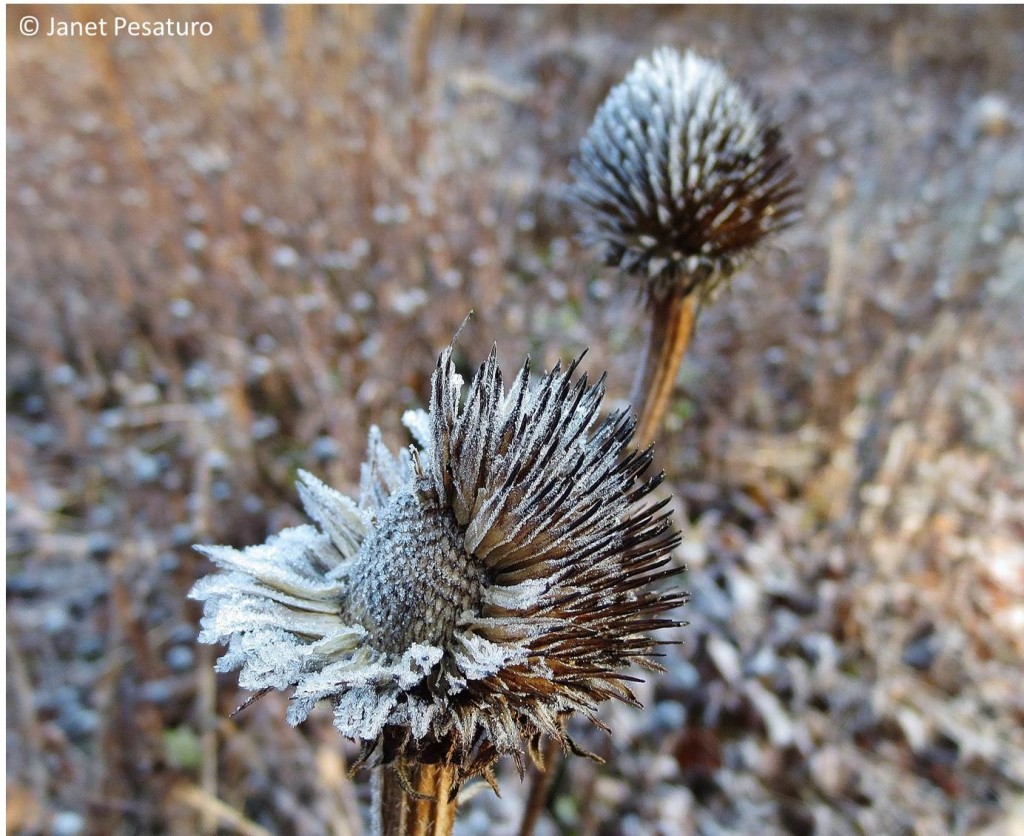
Seedheads of purple coneflower glisten with early morning frost. Goldfinches have harvested seeds from the one in the foreground.
Sustainable living goes beyond reduce, reuse, and recycle. It’s about consideration for the larger framework of Earth’s diversity of species. It involves managing your living space in a way that allows wildlife to thrive. One small but meaningful way to provide for wildlife is to leave patches of weeds and wildflowers, whether naturally occurring or planted by you, in place over winter. These patches of dead vegetation provide food, cover, and water for a variety of species. And, their interesting forms and subtle shades of brown and gray are beautiful, if you like the natural look. In fact, it was the unexpected beauty of this untidy garden on a chilly morning that inspired me to take these photos and write this post.
Seed heads of purple coneflower (above) and globe thistle (below) are finch magnets. They settle in right on top, and eat seed after seed. Sparrows, juncos, and small mammals forage for fallen seeds on the ground beneath.

Birds have already harvested many of the seeds from this globe thistle, and the one in the backyard has been plucked clean
Black-eyed Susan is a relative of purple coneflower, but in my yard, the seeds are taken later, often after most of the purple coneflower seeds are gone. Perhaps the seeds are less nutritious or more difficult to harvest.
Here’s another black-eyed Susan, below, so beautiful in the morning light with its coating of frost. It looks like the head has been pried apart by a probing beak.
Small birds use the dried spikes of Liatris (right) as perches, and probably consume the seeds, as well. The nooks and crannies in the spikes could be cozy spots for overwintering insects, which are also excellent food for hungry birds.
New England aster, below, is highly attractive to pollinators, including monarch butterflies. And, if you don’t clean it up in fall, birds feast on the seeds for as long as they last. In the photo below, some of the seed heads have been plucked clean.
Once the showy flowers of bee balm (right) have withered, you have to look closely to appreciate its quiet beauty. Inside each tiny, striped tube is one small, dark seed. I don’t know what species eats them, but I do notice that some of them appear picked apart.
Seeds are not the only food provided by dead wildflowers. If you leave a patch of goldenrod standing, you might notice large, spherical growths in some of the stems. These are galls, produced by the goldenrod gall fly. The fly injects her egg into a goldenrod bud in spring. When the larva hatches, it migrates down to the stem. There, it secretes a chemical that causes the stem tissue to grow a thick-walled protective sphere to house the larva.
Downy woodpeckers and chickadees somehow know that a juicy larva hides within each gall. They peck through the thick walls and gobble them up.
Everyone knows that many birds love sunflower seeds. But, like goldenrod, dead sunflowers have something else to offer birds. Renowned wildlife tracker Mark Elbroch writes in Bird Tracks and Sign that birds visit them in the morning to drink the dew that collects in the cup behind the nodding seed head.
I am not sure what eats the seeds of common milkweed. Something must – perhaps small mammals, if not birds. But I imagine the open pods could be dewy reservoirs, just like the cup behind sunflower seed heads. In any case, the pods are so pretty that I can’t bear to pull them out.
Finally, the entire patch of vegetation is excellent winter cover for many species, from invertebrates to birds to small mammals, and to larger predators that come looking for small prey. So don’t be a garden neat freak. Sit back and appreciate the interesting forms and subtle hues of these plants as they dry and decay, and watch for birds and other wildlife. It’s so much easier than filling bird feeders, and more valuable to wildlife. Sometimes it’s good to be messy.
Shared on: From the Farm Blog Hop, HomeAcre Hop #48, Homesteaders Hop #21, Mostly Homemade Mondays #58, Homestead Barn Hop #139, Thank Goodness it’s Monday #48, Creative Home and Garden Hop #20, Backyard Farming Connection Hop #60, Old-Fashioned Friday #46, Wildcrafting Wednesday #123, Green Thumb Thursday











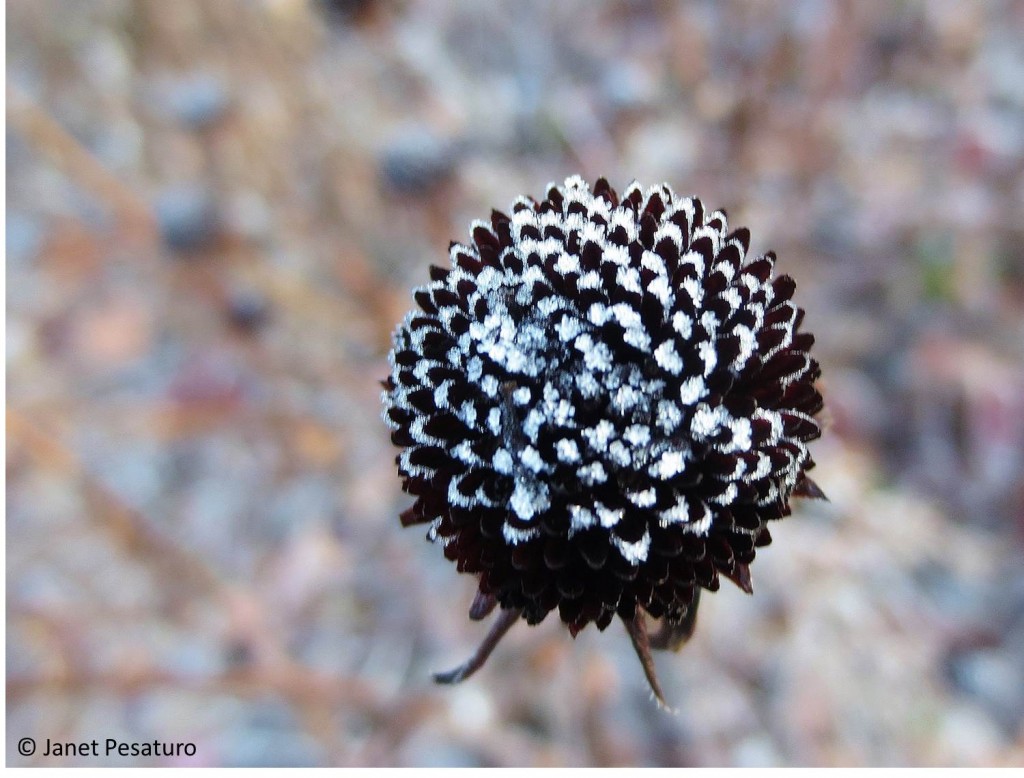
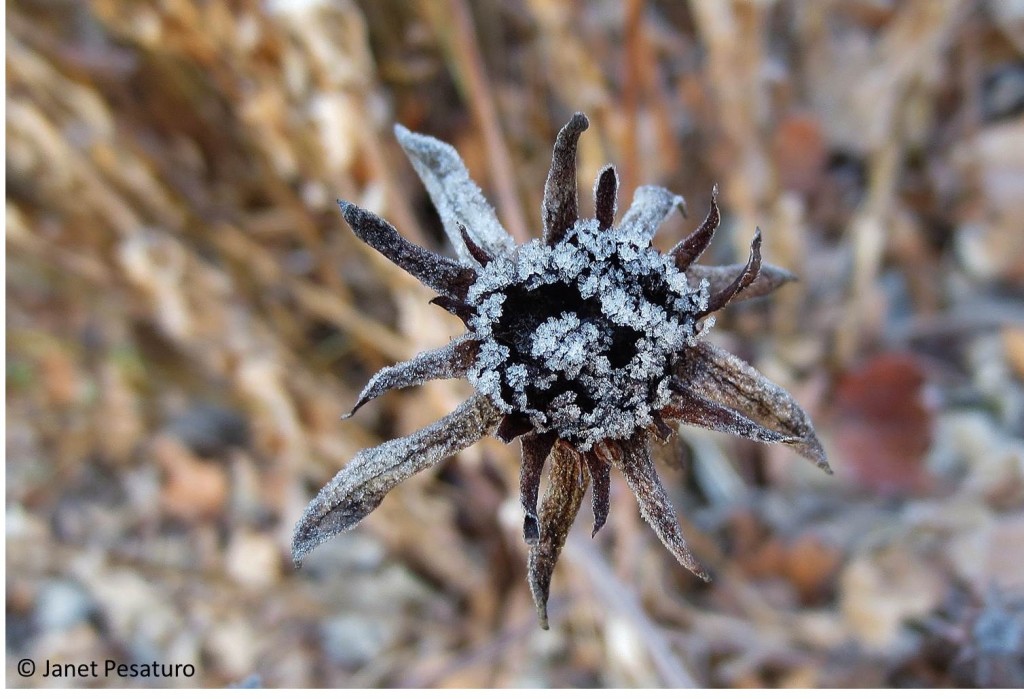
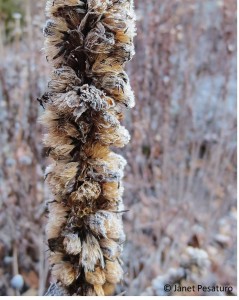
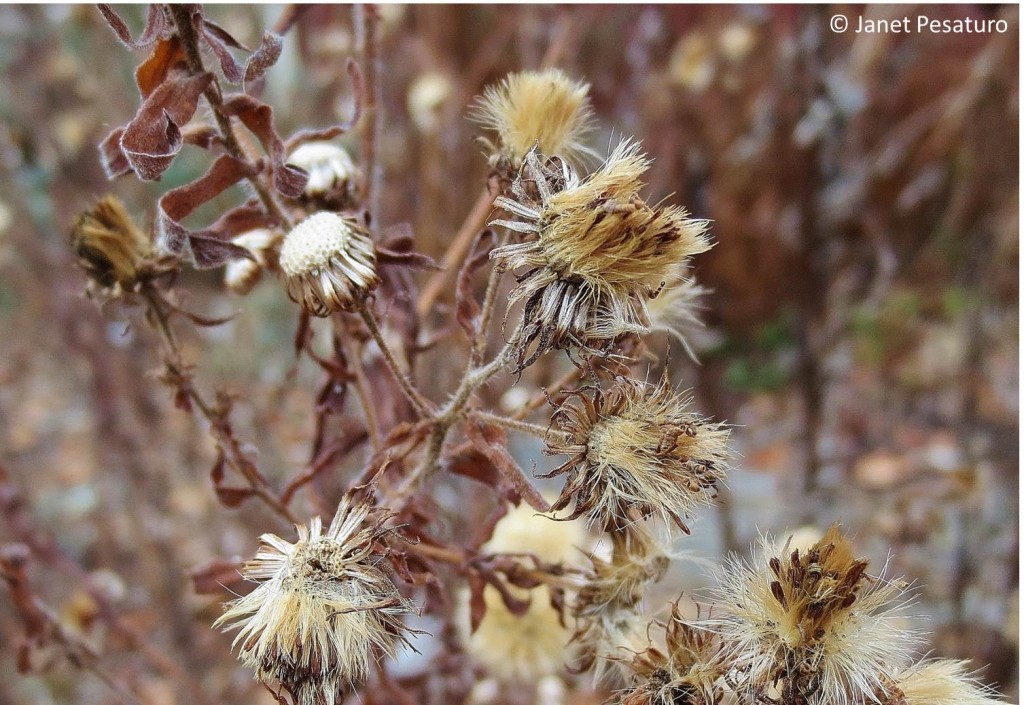
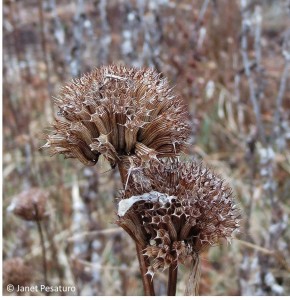
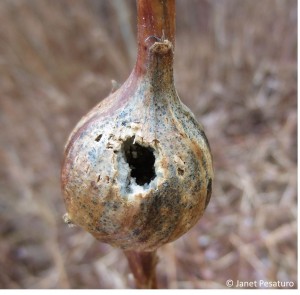
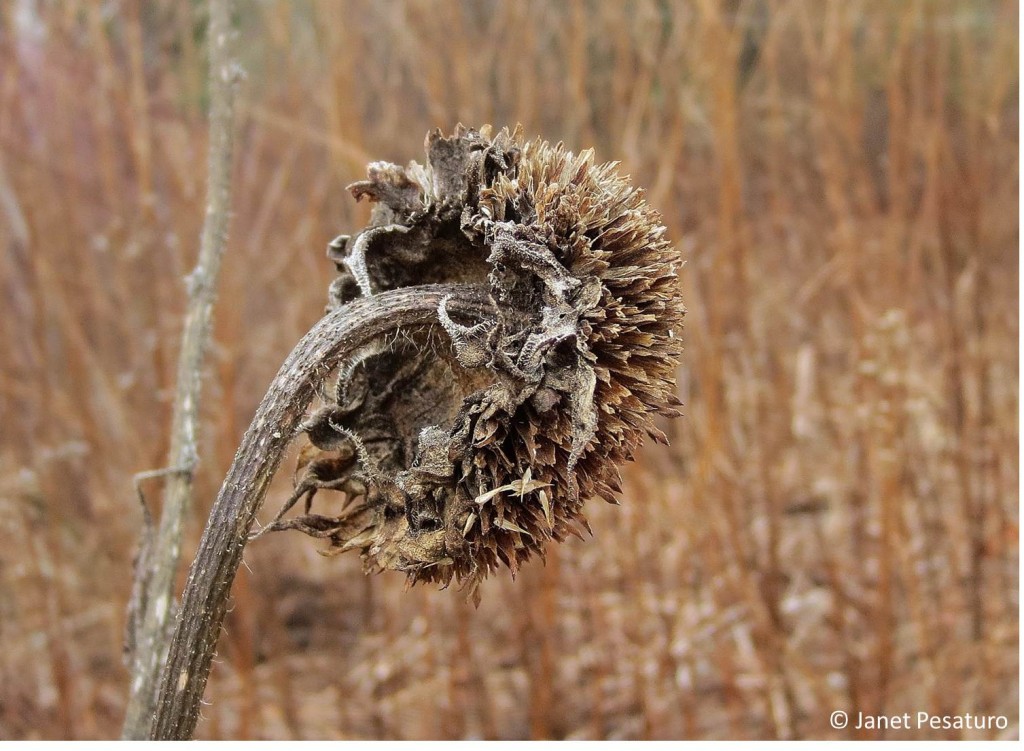
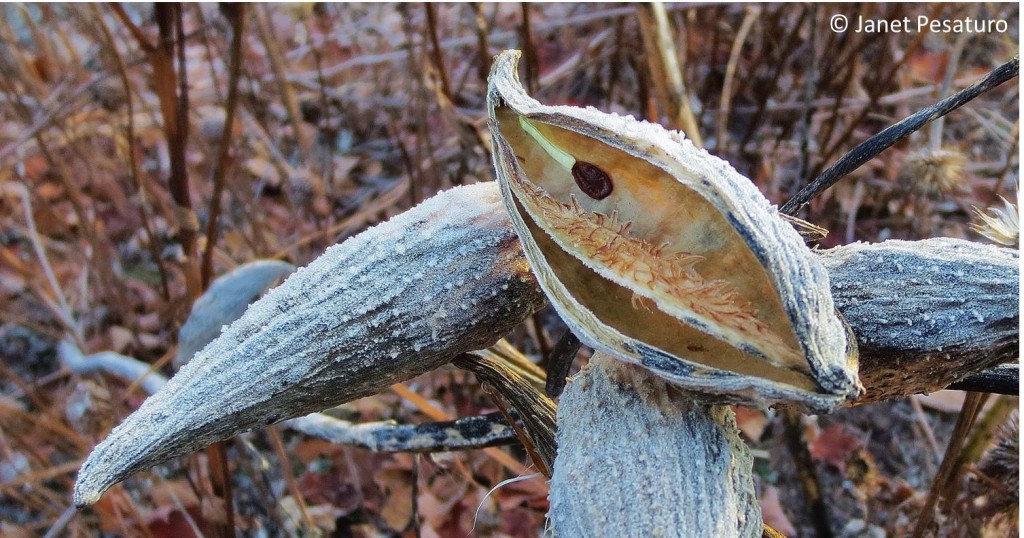
This is a really good post! We leave our pokeberries, coneflowers, etc. for the birds and enjoy watching them feed from the seeds all winter long.
That’s great, Toni! Pokeberries are a favorite of one of the prettiest: bluebirds. And thanks for stopping by!
Wonderful post. Thank you for encouraging others to not be too hasty in cleaning up the garden for winter. Loving your blog!
Thanks, Lisa!
I’ve always left my garden ‘messy’, hoping birds & other little creatures might find some use of flower heads through the winter months. I was never sure that this resource had much value (except to the deer!) & am pleased to learn that what I’ve been doing, more or less instinctively, is a good thing. Thank you for the knowledge & wisdom you share!
It definitely has value, Linda, probably more value than bird feeders. The reason is that the plants are valuable to overwintering invertebrates, as well as the birds. The other reason natural sources of food are better is that the food is spread out rather than concentrated all in one feeder. Feeders tend to accumulate a lot of droppings on and around them, which could allow diseases to spread quickly among the birds.
This is a really great reminder- thank you! I also do this 🙂 I’ve also read that you’re not supposed to till over your garden in the fall anyway- and by the time harvest is over, who has the energy to pull all that stuff down anyway 😉
Erin
http://yellowbirchhobbyfarm.blogspot.com
Janet,
In my experience (and that of the friend who first told me about the idea) there are more beneficial insects (ladybugs, praying mantis) to be found in the spring when I don’t tuck the garden beds in for winter.
I always clean up and amend whichever bed will be rotated to house the garlic crop for the winter, but I leave the perennial herb bed untouched, and don’t bother cleaning up the flower beds until spring.
Thanks!
That was great- I’m going to enjoy reading your blog. I love it when nature pops in on our little farm. -Carole
Thanks for visiting, Carole!
Pingback: Winter Garden Prep: Birds & Bees - Empress of Dirt
Beauty Beauty! Just like my yard. Going to try and harvest a few Bee Balm seeds and see what they do. But, they propagate themselves underground much better. On the Milkweed seeds.. I see the beautifully orange and black Milkweed bug eating those seeds every fall. A beautiful thing. If I didn’t mow my lawn, it would be a Milkweed pasture. Thanks for the post!
This is a fantastic, very helpful and inspiring article. I have dozens of perennials, some that I was unsure about leaving until spring….
I also have about 200 giant zinnias, which are currently in bloom, though not for much longer, here in upstate NY. I always plant hundreds every year and pull them up after a hard frost. Should I also leave the zinnias for birds and insects?
Thanks so much,
Meg
This is a fantastic, very helpful and inspiring article. I have dozens of perennials, some that I was unsure about leaving until spring….
I also have about 200 giant zinnias, which are currently in bloom, though not for much longer, here in upstate NY. I always plant hundreds every year and pull them up after a hard frost. Should I also leave the zinnias for birds and insects?
Thanks so much,
Meg